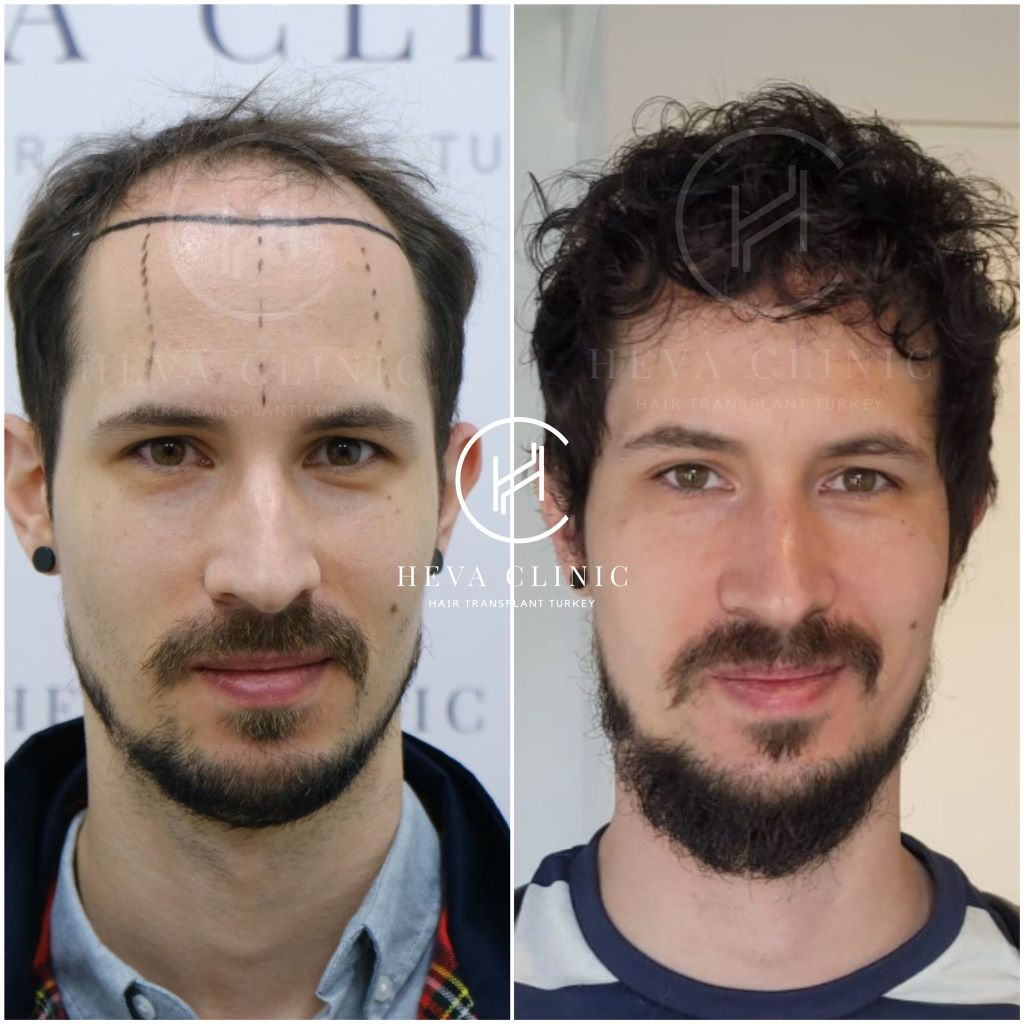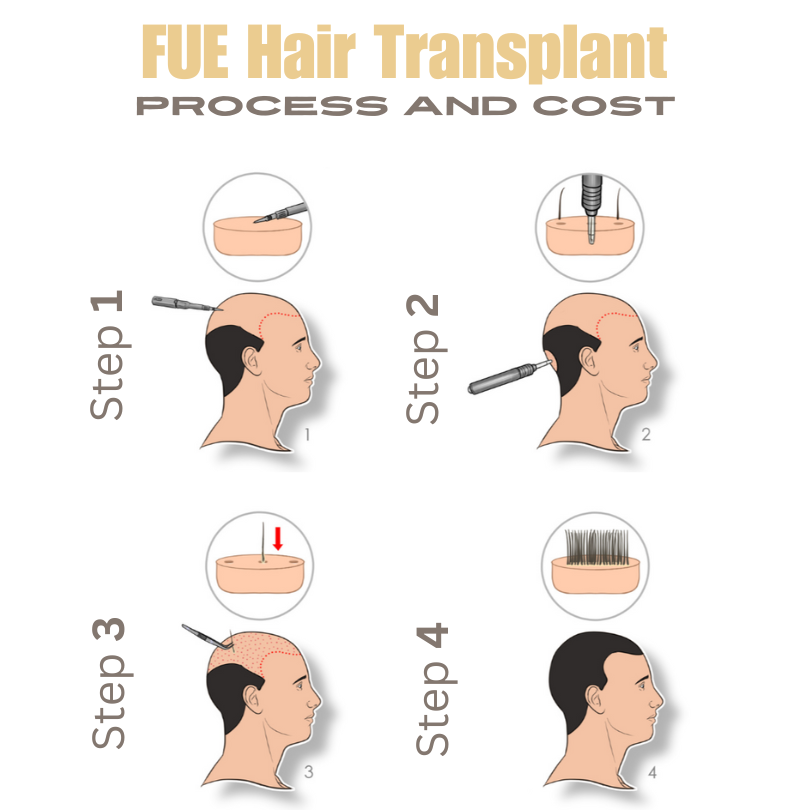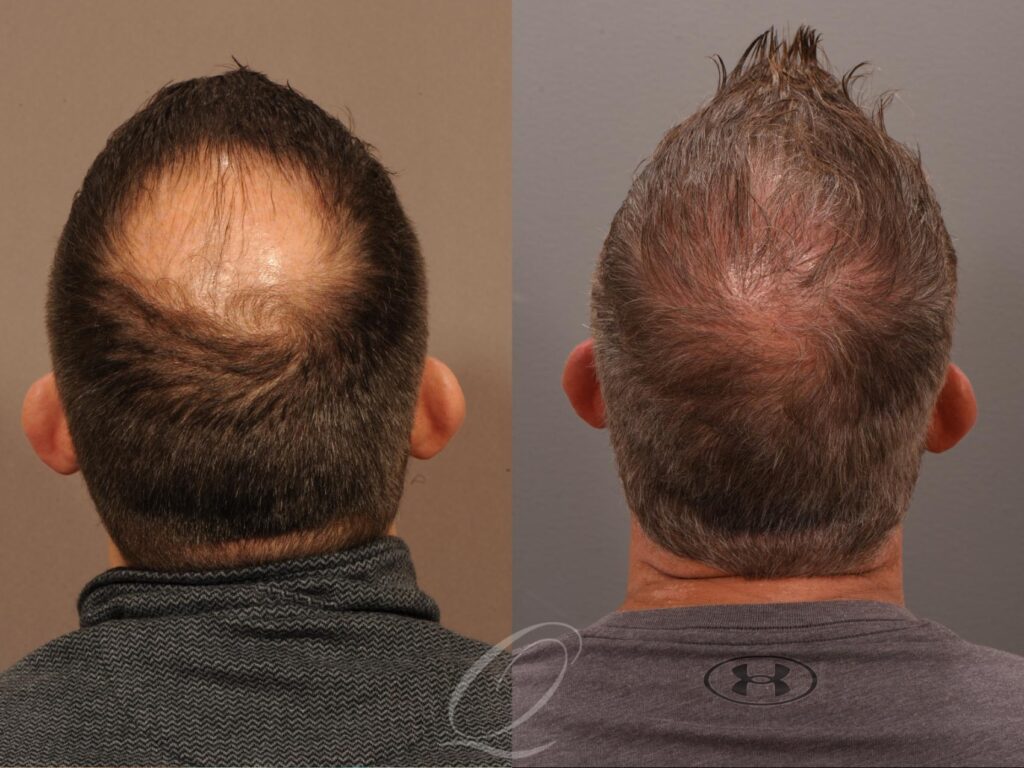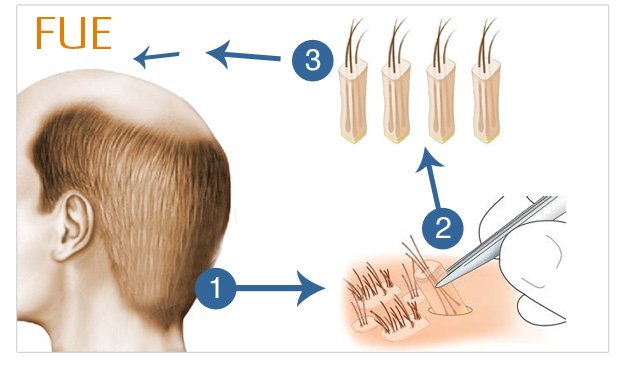FUE hair transplant: FUE is one of the most popular methods for modern-day hair transplants. Many patients believe it provides the most natural-looking results with very little scarring, which helps to disguise the fact that the patient had a hair transplant and make it as unnoticeable as possible.
A Follicular Unit Extraction (FUE) hair transplant is a minimally invasive surgical procedure that promotes new hair growth on your scalp and face. Whether you are concerned about your receding hairline, eyebrows, or beard, an FUE treatment is often the perfect solution for many causes of thinning hair.
Table of Contents
What are FUE hair transplants?
Follicular unit extraction (FUE) is a special method doctors use to help people get their hair back. It’s a gentle and careful way to move hair from one part of the body to another. Here’s how it works: doctors take tiny groups of hair, called follicles, from a part of your head where hair is thick. This is usually the back of the head, but hair from other places can also be used.
Each follicle is removed one by one using a tiny tool. This tool is super small, about the size of a dot on a piece of paper! The size of this tool can change depending on the type of hair you have. Once the hair follicles are removed, they are placed in areas where hair is thin or missing.
The cool part about FUE is that it uses your hair to look natural when it grows back. This technique is used by hair doctors worldwide because it’s safe and doesn’t leave big scars. FUE might be a great option if you’re worried about hair loss.

Origins of the FUE method
While hair transplants originated in Japan and the USA during the early 1900s, the modern-day FUE method was only developed in the early 1990s. Initially, the results looked unnatural (“hair plugs”). It didn’t become widely available in North America until 2002.
The FUE method has evolved from the traditional follicular unit transplantation (FUT) to reduce scarring and provide a more natural-looking hairline. It also reduces tissue shock to the hair follicles and increases the survival rate of the hair grafts.
Why have an FUE Transplant?
Hair loss can affect anyone. FUE hair transplants are popular because they offer a natural-looking solution without major surgery. This method is perfect for both men and women who want to restore their hair and confidence.
It’s a great option for people experiencing pattern baldness or thinning hair due to genetics, stress, weight loss, or medical treatments. The recovery time is shorter than traditional methods since it’s minimally invasive. With FUE, you can enjoy fuller, healthier hair without much downtime.
What can an FUE Hair Transplant Treat?
- Male Pattern Baldness (MPB): This condition causes hair loss on the scalp, starting with a receding hairline and eventually leading to baldness on the top of the head. FUE hair transplants can help prevent further receding and promote new hair growth.
- Female Pattern Baldness (FPB): Women can also experience hair loss, often showing signs of thinning hair on the top of the scalp. FUE hair transplants can address hair shedding and reduce the appearance of thinning hair.
- Beards and Eyebrows: FUE hair transplants may be a good option if you struggle to grow facial hair or have thinning or lost beard/eyebrow hair. This method allows minimal scarring and can treat areas that other methods, like FUT (strip method), cannot.
How Does the FUE Procedure Work?
After receiving your free consultation with one of our hair transplant surgeons, could you arrive at our clinic on Harley Street? All our patients receive local anesthetic during hair transplant surgery. You shouldn’t feel anything more than a little pressure during the surgery, almost like a head massage!
At the beginning of the procedure, the lead hair transplant surgeon will extract follicular units from the donor area in natural groups of 1-4 (a hair graft). These grafts, or follicular units, are circled by a tiny 1mm punch, enabling an accurate and precise incision.
The follicular unit is then gently grasped and pulled away from the loose connective tissue surrounding it under the skin. Once the hair grafts have been taken, no more preparation is required. These small donor hairs are then implanted individually into the bald area and repeated as desired.
Unlike other hair, patients are left with tiny 0.8mm – 1mm scars from follicle extraction. surgery treatments that make larger incisions. The FUE recovery time is usually between 6-10 days.

The Four Stages of a FUE Hair Transplant
- Preparation and Anesthesia: The doctor will give you a local anesthetic before starting the FUE hair transplant. This ensures you won’t feel more than a slight pressure during the procedure.
- Extraction: A Micro Punch tool cuts a small circle of skin around each follicular unit. The follicular unit, or graft, is then gently prised away from the surrounding loose connective tissue under the skin.
- Sorting: Once the grafts are harvested, they are sorted according to how many hairs are in each follicle. This step is important to ensure the grafts are healthy and ready for implantation.
- Implantation: Finally, the grafts are carefully implanted into the balding area of the scalp. This is done precisely to ensure the new hair grows naturally and blends in with the existing hair.
What is the difference between FUE and FUT?
There are several key differences between the FUT and FUE hair transplant 30s methods. Often called the ‘strip method’ or ‘strip surgery,’ FUT hair transplants take large strips of donor hair from the patient’s scalp.
These hair strips are dissected under a microscope before imploding into the balding area. In comparison, follicular unit excision (FUE) takes much smaller hair grafts from the donor area, making it quicker and leaving most patients with much less scarring than those who have undergone FUT.
Do FUE Hair Transplants hurt?
Patient safety comes first and foremost at our clinic. Some great news is that during the procedure, you should not feel any pain at all. This is because the treatment is done under local anesthetic. You shouldn’t feel a thing!
After your FUE hair transplant surgery, there may be some slight discomfort. However, as almost microscopic incisions are made on the scalp, you should not expect to feel any tightness as you would with FUT treatments.
After your procedure, one of our hair transplant surgeons will contact you and discuss the aftercare process extensively with you. If you have any problems, get in touch with us!
Results and Aftercare
Following your hair transplantation procedure, you can access our post-transplant aftercare program and expert guidance whenever needed.
Keeping the scalp hydrated during the first few days following the procedure is important to protect against infection and minimize scabbing. We provide full instructions for aftercare and are on hand to answer any concerns following your procedure.
It can take 2 to 3 months for the new follicles to take root and naturally grow new hair, so regrowth may be uneven initially. Rest assured, you will soon benefit from thicker-looking hair. Although every patient’s recovery time and results may differ, most patients see full natural hair growth around 10 months following their procedure.
Hair Transplant Surgery vs Alternatives
While there are many treatments available today, an FUE hair transplant Cost offers a longer-lasting and fuller result than its alternatives:
- Medication (like Finasteride and Minoxidil): Slows down hair loss but requires ongoing use and can have side effects.
- Tattoo Treatments: Only mask hair loss; they don’t stimulate growth.
- Synthetic Hair Wigs: Short-term solution and can be uncomfortable.
- Real Hair Wigs last longer than synthetic hair, but they can be expensive and don’t stop hair loss.
- Choosing an FUE hair transplant allows you to have and style your hair, making it a more permanent and natural solution.
Further developments of the FUE method
With the growing popularity of the FUE method, new technology has been developed to enhance this technique. Direct Hair Implementation (DHI) uses a “CHOI pen” to extract and implant hair follicles directly without incision.
The ARTAS method employs a robot to minimize manual errors but is limited to specific candidates. NeoGraft, popular in North America, uses a special “wand” with suction to reduce removal time and scalp trauma. While these advancements offer benefits, they are more expensive and not widely available.

Frequently Asked Question
What is a FUE hair transplant?
FUE hair transplant is a method where hair follicles are taken one by one from a donor area, like the back of your head, and placed in areas with thinning or no hair.
Does the procedure hurt?
The procedure is mostly painless. Some people feel a little discomfort, but it’s usually very mild.
How long does it take to see results?
You can start to see new hair growth in about 3 to 4 months, with full results visible after about a year.
Conclusion
FUE hair transplants offer a fantastic solution for those experiencing hair loss. They’re a great choice for many, with minimal scarring and a natural look. If considering this procedure, research thoroughly and choose a qualified specialist.
Understanding the costs, benefits, and what to expect will help you make an informed decision. You can look forward to a successful hair restoration journey by taking the right steps.
